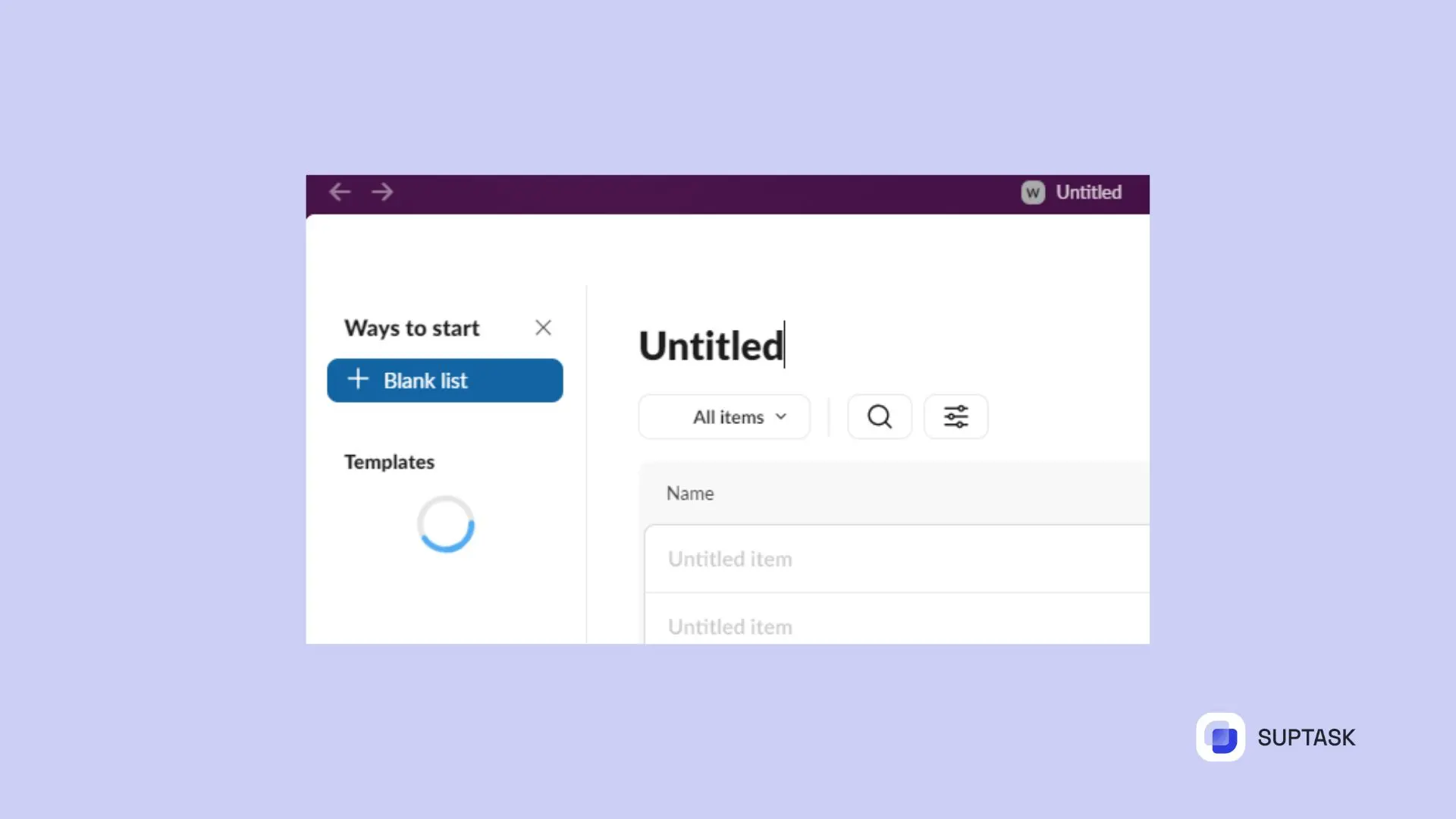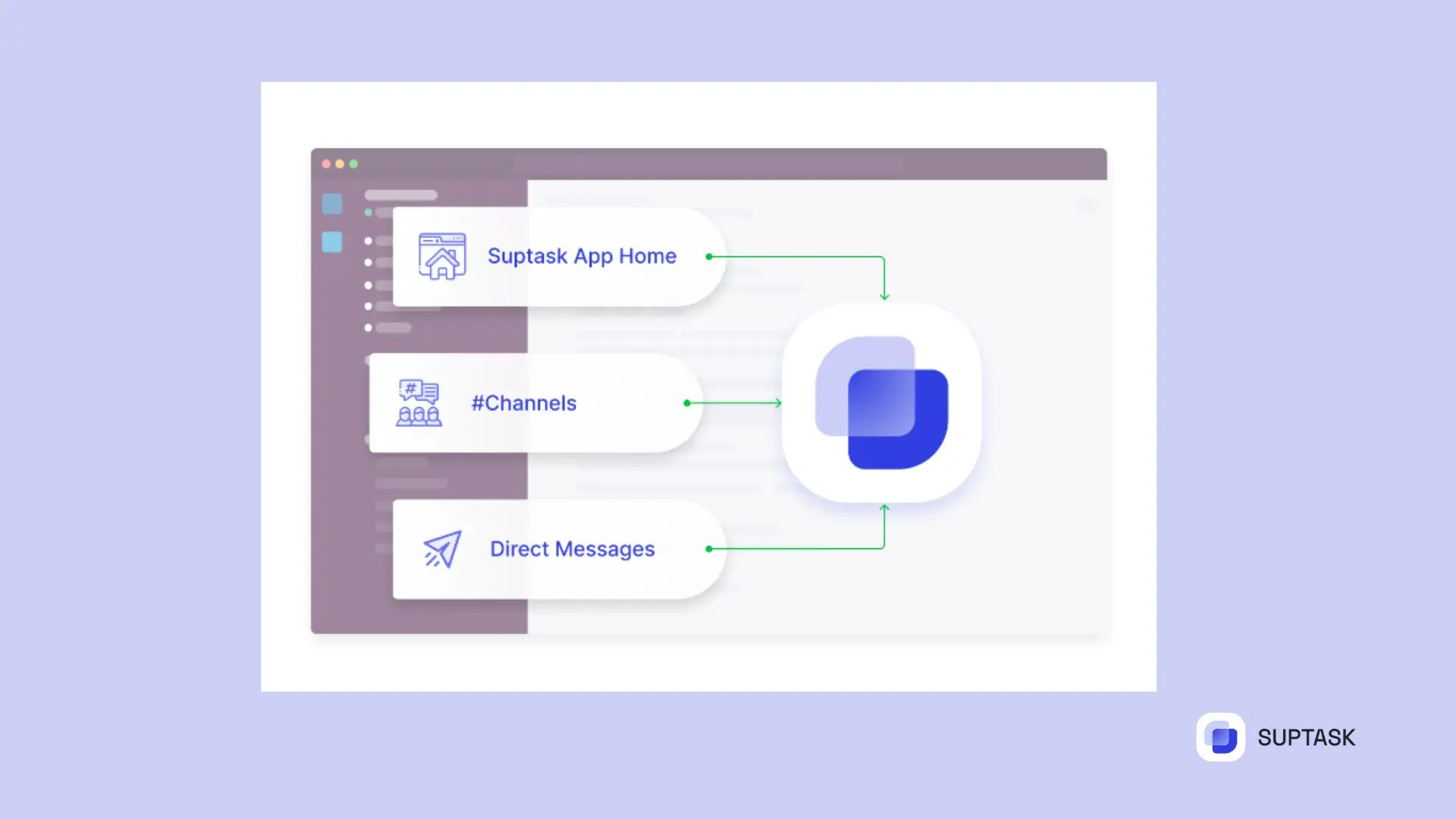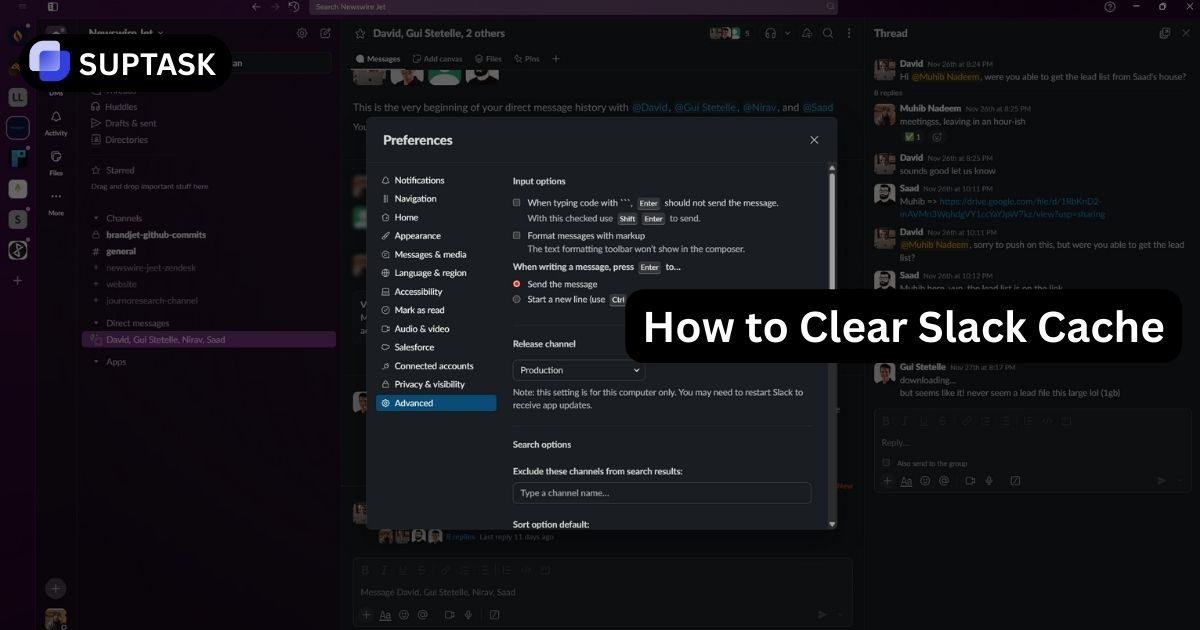Are you juggling multiple tasks and struggling to stay organized? Slack Lists offer a handy solution right within your familiar Slack workspace.
Key Takeaways
- Centralized task hub within Slack for easy access and visibility.
- Customizable fields and views for tailored organization and prioritization.
- Automated workflows and app integrations for streamlined processes.
Getting Started with Slack Lists
Slack Lists provide a unified platform for managing projects, tasks, and deadlines, empowering you to:
- Monitor task progress at a glance.
- Assign owners and set due dates.
- Foster accountability within your team.
- Prevent tasks from falling through the cracks.
- Maintain transparency on task status and timelines.
- Set clear priorities
- Define each person's tasks
Slack Lists improve team coordination and teamwork for task management. Instead of multiple apps, your team focuses on tasks directly in Slack, avoiding distractions.
This boosts productivity within existing workflows. During testing, 77% of clients said lists helped them complete work more effectively - proof that lists optimize job performance.
Designed for teams to handle projects, requests, and goals inside Slack, Lists make these visible alongside other duties.
Whether coordinating marketing campaigns, product launches, new hire onboarding, or tech rollouts, Slack covers it all, making list creation vital. Now let's set up and customize our first list.
Create a New List
Creating a new to-do list in Slack is easy. You can start fresh or use a pre-made template.
Step 1: To create your list, go to the sidebar's 'Lists' and choose 'New List'.

Then decide to start blank or pick a template. Slack Lists have items, fields, views, filters, layouts, and threads.

Step 2: Customize fields to track key details like task status, assignee, priority, and numeric values.
To customize fields: select an item in your list; click 'Add Field' in the right panel and add new fields or modify existing ones to match your team's tracking needs.

Step 3: Add items to your list.

Fill in details for each task or deliverable.
Teamwork Made Easy
Good teamwork is key to project success. Slack Lists let you create lists, assign tasks, and comment, keeping your team working well together. Share lists in Slack channels to loop in your team or outside partners.
“In fact, 77% of clients reported better productivity with Slack Lists, according to.”
To keep your team aligned, share your list with specific people or channels. Start conversations around tasks that need discussion. Use Slack Lists to give context so everyone stays informed and can join conversations easily.
It's key to make tasks easier to follow. That's why we embed details about an item right in its chat thread. This lets us talk about each task directly and keeps things organized.
We write things down clearly and share updates as we work as a team. This makes it simpler to track progress toward our shared goals.
Share Your List
At first, your new list is private, just for you. But you can share it so others can see or edit it too. Keep in mind that sharing a list is different from Canvas permissions. If you share a list task in chat, those people can edit that task.
Saved views can be shared, and anyone with access can see the same view. Sharing lists helps your team stay in sync on tasks.
You can check progress together, keeping everyone on the same page. Clear teamwork like this helps you reach your goals smoothly.
Assign Tasks
In Slack Lists, managing projects is easy. Using Slack for projects, each task has a People field to assign it to team members. This shows who is responsible for what. It helps with teamwork and ensures tasks are done on time.
Tracking due dates and who is assigned enhances accountability. Team members stay focused on their tasks. Using this feature streamlines task management and keeps the project timeline on track.
Comment and Discuss
In Slack Lists, you can create message threads for tasks or list items. This keeps discussions focused. By starting a thread within a task, you reduce context switching. All relevant details stay in one place.
Commenting on tasks in Slack Lists adds context and encourages task-specific conversations. It ensures team understanding and easy access to task information. Moreover, for those on a tight budget, adopting a free ticketing system can enhance your team's communication and ticket management without financial strain.
Want to take your task management to the next level? Explore how Suptask enhances your Slack experience.
How to Use Slack Lists for Ticket Management

Although Slack lists serve as an effective mechanism for organizations, companies require a more robust solution for ticket management. This is where Suptask steps in; thus, it reuses your Slack list, which is the ticketing system. By utilizing an internal ticketing system, you can enhance your ticket management process and streamline workflows. Through Suptask, you can
- Fetch tickets from any corner of Slack: Whether viewing a channel individually, sending your colleague a direct message, or even using your email to send issues, Suptask will store the tickets in one place for you.
- Foster a seamless process: Agents can cooperate with each other through Slack to answer tickets and ensure that the solution is found as quickly as possible.
It is not just about sorting tickets with Suptask, it is about improving the workflow. Suptask can also help you with
- Private tickets: Keep your confidential data hidden behind the private tickets.
- Custom and favorite views: Generate your web views of tickets and bookmark your most liked ones for easier access.
- Dashboard analytics: Monitor your performance using KPI measurements and get email reports containing many details.
- Compatibility with the tools you are using: Simply link to GitLab, GitHub, JIRA, and Zendesk.
By integrating Suptask with your Slack lists, you are allowing yourself to work with tickets more efficiently and in a more organized manner. You may design ticket forms as you prefer, add co-admins, and build intelligent, interactive service level agreements (SLAs) to ensure no issues slip through the cracks. The Slack ticketing system transforms Slack lists become a comprehensive solution for ticket management rather than just a way to organize tasks with Suptask.
Tips to Manage Tasks Easily with Slack Lists
Save time with shortcuts and commands to manage tasks in Slack Lists. Use emojis to tag and filter items for better organization. These tips will help you keep lists well-structured and boost productivity.
Embed Lists in Canvases
Drag and drop list links into canvases to keep them visible. You can move and resize embedded lists for a clean layout. Access lists quickly from a dropdown menu.
Integrate with Other Tools
Connect Slack Lists with over 2,600 apps, such as Google Drive and Zoom. Leverage free collaboration tools to enhance your productivity, and use Workflow Builder to run actions in other services. Both members and guests can create workflows.
Build custom integrations using the Slack API. This allows you to tailor Slack Lists to your team's needs and streamline your workflow by blending lists into Slack.
Slack can also benefit significantly from integration with Suptask, where managing tickets directly within Slack becomes accessible through its incident management system.
FAQ
How do I create a new list in Slack?
To make a new list in Slack, go to the sidebar and click 'Lists', then 'New List'. You can start with a blank list or use a template to save time.
How can I customize fields in Slack Lists?
Open an item and click 'Add Field' on the right panel to add, change, or remove fields. This lets you track details like due dates, people in charge, and priorities.
Can I share my list with external partners?
Yes, you can share your list with people outside your company using Slack Connect.
How do I automate tasks in Slack Lists using Workflow Builder?
Workflow Builder lets you automate tasks in Slack Lists. You can use pre-made templates or build your own workflows from scratch. These can include forms to automatically collect info.
Custom workflows in Slack help organize tasks better and make operations run smoothly.
What are some advanced tips for using Slack Lists more efficiently?
Use keyboard shortcuts and slash commands to work on list items faster. Add emoji tags to easily filter content in Slack. This improves workflow and organization.













